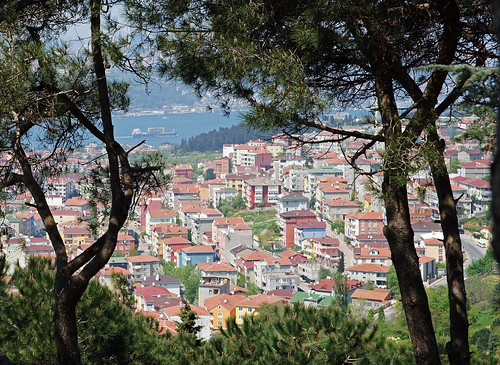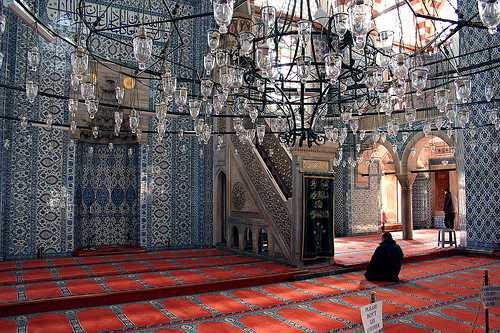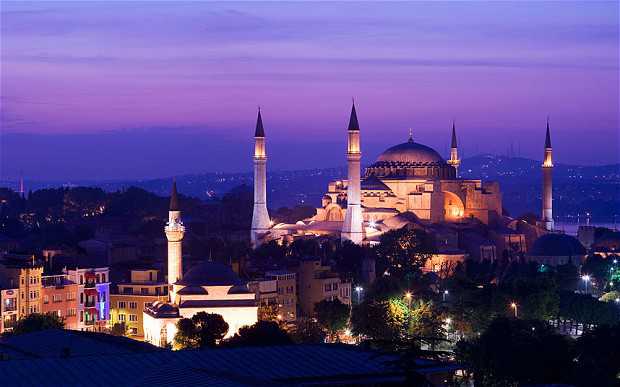Here’s how to plan a vacation to this popular holiday destination, a country that blends the cultures of Asia and Europe.
Don’t miss…
The Whirling Dervishes Festival, at the Museum of Mevlana, Konya, honours Rumi, the famous Sufi saint. This year, it’s from December 10-17. To fit it in the given itinerary, take a three-hour drive to Konya from Cappadocia on Day 6. Catch the day-time shows and take the 8.40 p.m. Konya Mavi Tren to reach Izmir early the next day. You can always add a night to your itinerary. The fare is Rs 2,250 per head on a twin-sharing basis.
The whirling dervishes fest
Best time to visit: May-June and autumn are the best months, but be ready to shell out peak season rates. In April, the crowds will be thinner and rates cheaper.
Trip Trail
Start your seven-day trip from Istanbul: visit the Blue Mosque, Hippodrome and watch the sound-and-light show at Sultanahmet Park. Keep the next day for a visit to the Topkapi Palace, the Treasury, Istanbul Archaeology Museum, the 19th century Ottoman neighbourhood of Sogukcesme Sokagi, and the Grand Bazaar.
On Day 3, take a day-long cruise up the Bosphorus and catch a flight to Kayseri in the evening. The next morning, set out for the Zelve valley and the open-air museum of Goreme. In the afternoon, visit the top of the fortress at Uchisar and return for a night show of the Whirling Dervishes at the Sarihan caravansary. On Day 5, travel early to the underground cities of Kaymakli and Derinkuyu, or you can shop around Avanos and Urgup. On Day 6, take a three-hour drive to Ankara and fly to Izmir, then drive to Selcuk or Kusadasi for the night. Keep the next day for the archaeological site of Ephesus. Finally, fly down to Istanbul, and back home.
Tourist attractions: FREE
Istanbul: Blue Mosque, Suleymaniye Mosque, Ortakoy market and Spice Bazaar.
Izmir: Ataturk House Museum.
Cappadocia: Nevsehir and/or Urgup Museum, Tatlarin Underground City Church.
Paid: Full-day Bosphorus cruise:Rs 800 onwards. Topkapi Palace Museum:Rs 600 (extra for the Harem section). Hagia Sophia Museum and Gallery:Rs 600 Pamukkale:Rs 750 Agora archaeological site:Rs 90 Ephesus archaeological site and museum:Rs 750 Goreme archaeological site:Rs 450 Underground cities, Cappadoccia:Rs 240-450 Anatolian Civilisations Museum:Rs 450 Aphrodisias:Rs 230
Travel essentials:
Make sure you don’t leave home without adequate travel and medical insurance. There is a travel advisory against visits to Akcakale and Ceylanpinar. It’s also best to avoid the provinces of Hakkari, Sirnak, Siirt and Tunceli. If you can brave the queues, the best exchange rate is usually available at the state-owned banks like Ziraat Bankasi.
Before you leave
Air fare: The direct Turkish Airlines flight from Delhi to Istanbul costs Rs 40,000 per person, while the Air India option is for Rs 64,300. As all leading online travel agents don’t represent Turkish Airlines, watch out for this option before making a blind booking. A cheaper option with a long stopover is the Aeroflot return flight for Rs 37,700.
Exchange rate : Currently, Rs 100 is fetching Turkish Lira 3.27. So, this is not a cheap place to visit and the exchange rate is unlikely to reach the favourable levels of May 2012 soon. In fact, the Lira is expected to appreciate through 2013 and 2014. So it’s best to plan a trip before it becomes more expensive.
Visa: You will have to apply at the Turkish embassy and Rs 3,300 visa fee has to be paid by cash or postal order/ company cheque payable to the Turkish Consulate General. Check if travel agents can do this on your behalf. You can also get the visa on arrival for short stays of up to 30 days if you have a valid UK, US or Schengen visa.
Trip expense: For a backpacking trip, the average daily expense per person (stay, food, sightseeing to one place, entertainment, local transportation) is Rs 900-1,300. It’s Rs 45,000-60,000 per person for a mid-range, seven-day itinerary by leading tour operators, without flights. Luxury breaks will cost upwards of Rs 7,000 per person per day, according to Budgetyourtrip.com.
Accommodation : From regular hotels across star categories to boutique hotels and unique Ottoman mansion inns and cave dwellings, there’s something to meet every budget and taste. As a guide, keep aside Rs 3,000-4,000 a night for three-star accommodation, while four-star rooms can be had for less than Rs 8,000 a night.
Local commute: There are plenty of modern, luxurious buses connecting Turkish cities and towns daily, which are cheap as well. For more comfort, rent a car for Rs 1,700-Rs 3,000, depending on the company and time of visit. The train service is not cheap —low-cost carriers offer better fares—but in 2014, upgraded, high-speed train services are likely to be unveiled.
via How to plan your trip to Turkey – Economic Times.





 Photo: Tavanarasi from TripAdvisor
Photo: Tavanarasi from TripAdvisor












